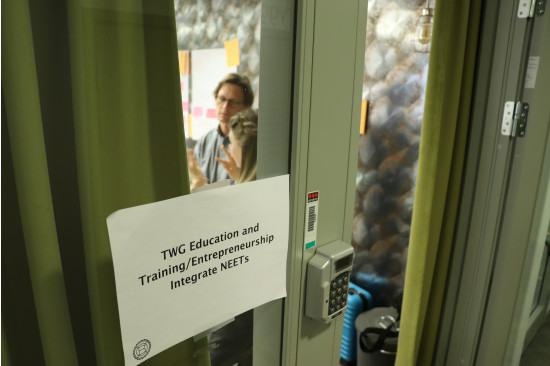MLG and Stakeholder Engagement

Stakeholders and contributors - stakeholder engagement
Once the Policy Area / Horizontal Action is set in terms of strategic framework and monitoring/evaluation framework, the internal stakeholders can start ”operations” – build flagships and other high-impact delivery formats. This will mark that the PA/ HA is about to leave Phase 1. It is in Phase 2 that the Strategy starts to perform, and external outcomes and results become visible. It also becomes easier to design, monitor and evaluate initiatives.
Although operations in Phase 2 can be likened to a production factory, that is why it is crucial to spend time in Phase 1 for discussing the PA/HA Modus Operandi – preferred formats that create envisaged impact with certain given inputs (often time and money of the stakeholders involved).
Building high-impact processes implies broadening the circle of stakeholders – this transition into Phase 2, can be called ”Mobilisation”. Essentially, PACs/HACs mobilise resources for flagships and other activities, by engaging external organisations that represent various levels of governance as well as thematic actors in the region (that might include civil society organisations, business organisations, educational institutions, even financial institutions).
Stakeholder engagement is an area of attention, as well as a capability, that Policy Areas and Horizontal Actions should continuously develop in order to perform external results. This capability should go hand in hand with the capability to design flagships or other impact-driven processes. To draw further on our metaphor of a factory, stakeholder engagement supplies fuel and manpower to our ”production”. On the other hand, if we have established ”production processes” (i.e. flagships, processes, thematic working groups, networks) we find it much easier to welcome and channel new actors/initiatives that approach us because they want to be a part of important thematic work coordinated within the PA/HA.
The transitional Mobilisation-phase creates prerequisites for smooth operation of the PA/HA in Phase 2 ”Operations”. In Phase 2, each PA/HA has Flagships (or similar processes) that ensure continuity, productivity and efficiency of the PA/HA performance. Now that the operational responsibility is transferred to Flagship Leaders, the attention of the PAC/HAC can go to ensuring the coherence and integration of the Policy Area/Horizontal Action as such – through aligning results and outcomes of the flagships and articulating the overall impact of the PA/HA. This work enables the PAC/HAC to create a full picture and communicate the value created to both the external and internal stakeholders. The PA/HA visibly performs.
Stakeholders and flagships
The ’right’ set of stakeholders on board is YOUR MOST STRATEGIC WEAPON when you design a flagship - it is that principal feature of flagships that makes them so ’smart’ and efficient. The stakeholder set should include representatives of various levels of governance (national, regional, local) and/or spheres of society (e.g. social partners, NGOs). Getting the right composition will almost automatically give you several advantages at the same time:
- You will get the fullest and most realistic picture of the issue you intend to address – the various stakeholders’ perspectives work as pieces of puzzle that together build a systemic understanding of the issue and dynamic at play (e.g. policy gaps existing at certain levels)
- You get a set of motivated contributors each of whom is likely to have knowledge, approaches, methods and tools that they use to combat ’their part’ of the issue – together they might come closer to a systemic solution
- The various stakeholders is likely to have experience of funding thematic activities, or have access to finding available at their level – combined, these resources might fund your flagship or some parts of it
- Each of the stakeholders has own established channels to policy-levels and other decision-making levels. It enables you to build the so called ’policy loops’ - processes for delivering the flagship outcomes to these levels, along the way.
- Consequently, your flagship’s communication strategy can easily be built on the stakeholders’ natural channels, using their fora, communication strategies and even personnel.
- It will be easier to find a skilful and motivated Flagship Leader within this stakeholder set and establish various support processes and motivating implementation culture.
Considering the benefits to be harvested from having serious and internally motivated Stakeholders, the Policy Area Coordinator and the Flagship Leaders should make stakeholder engagement one of the mission-critical activities in their work, alongside with creating and managing flagship processes as such – in order to channel the stakeholder engagement to creating tangible results within the PA/HA. Doing one without the other does not make much sense.
Mobilizing stakeholders
Multilevel governance is the guiding principle of macro-regional strategies. Reaching and involving stakeholders is an important part of the implementation of EUSBSR. Some of the Policy Areas/Horizontal Actions have successfully built structures for reaching, gathering and involving stakeholders. These structures consist of networks of stakeholders, cross-sectorial and multilevel in the Member States. Often these national networks are maintained by the Policy Area Focal Point together with the Policy Area Coordinator. Meetings are organized on a yearly base combined with meetings organized by flagships and/or projects.










